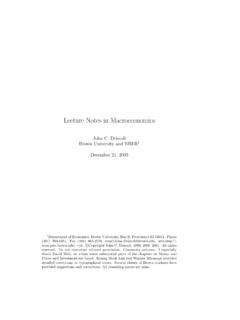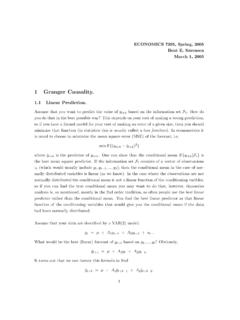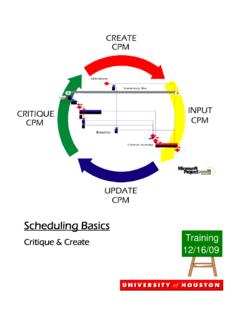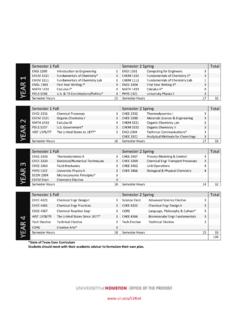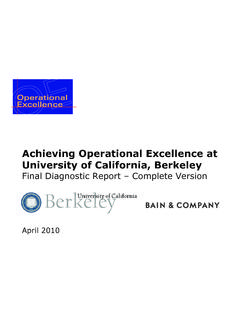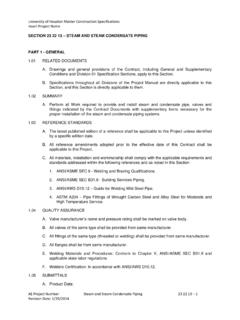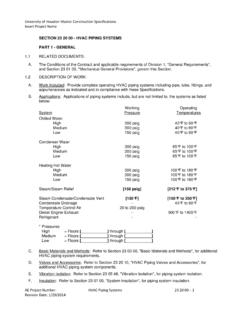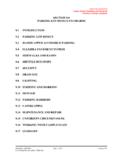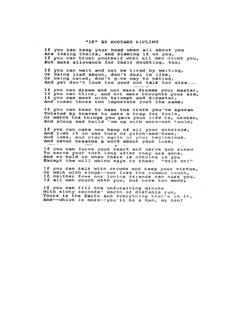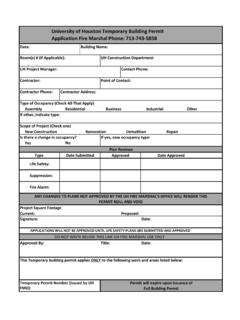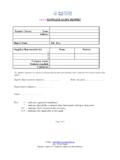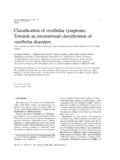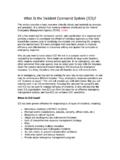Transcription of A Sample Research Proposal with Comments
1 A Sample Research Proposal with Comments A Research project or thesis will take at least two semesters to complete. Prior to starting a Research , enrolling in the first semester Research course, students must go through the Proposal stage, during which students will develop their Proposal and have it reviewed by his/her Research advisor. This means that students need months of planning and background Research work before the start of the first semester Research . Students are not allowed to enroll in a Research course without an approved Proposal .
2 For students planning to start their Research in the fall semester, the deadline for the Proposal submission (to your advisor) is July 15. For those who plan to start in the spring semester, the Proposal deadline is December 1. During the Proposal stage, students should discuss their Research interests with CM faculty members, identify a Research topic, conduct preliminary literature review and develop a project Proposal . The Proposal should discuss problem statement, objectives, Research methodology, Research activities, and a time schedule in about 3-5 pages.
3 A Sample Proposal is attached here for your reference. Sample propos al te xt Comme nt A Conceptual Framework for Scheduling Constraint Management Provide a brief and meaningful title to your project 1. Introduction Every construction project is unique and has its own operating environment and sets of technical requirements. As a result, the execution of a construction project is subject to numerous constraints that limit the commencement or progression of field operations, which invariably have significant negative impact on overall project performance.
4 By definition, constraints refer to any condition, such as temporal/spatial limitations and safety/quality concerns, which may prevent a project to achieve its goals. Successful execution and control of a construction project relies on effective identification and management of constraints through master planning and short-term look-ahead scheduling. While the master schedule provides a global view of a project and the overall execution strategy, a look-ahead schedule offers a detail account of operational constraints and a detailed plan showing work to be done within a relatively short time window.
5 Ideally, these detailed schedules should reflect actual field conditions and provide field personnel with operation instructions free of constraints and conflicts (Hinze 2008). This look-ahead scheduling and constraint analysis procedure is also a critical component of the last-planner methodology proposed by Ballard (2000). This Research project will provide an overview of state-of-art schedule constraint analysis practice during look-ahead scheduling. In addition, it will propose a conceptual framework for managing constraints.
6 Background or introduction section provides a description of the basic facts and importance of the Research area - What is your Research area, the motivation of Research , and how important is it for the industry practice/knowledge advancement? 2. Proble m State me nt The importance of developing a constraint-free and reliable work plan has long been recognized by the industry. However, numerous construction projects are still plagued by delays and cost overruns, which can frequently be traced to ineffective identification and treatment of constraints.
7 First, when a constraint is not properly identified during scheduling, subsequent conflicts in the field are inevitable. Today s projects are becoming more and more technically complex and logistically challenging, which exposes construction operations to even more complex constraints. Second, the traditional scheduling methods, bar charts and Critical Path Method (CPM) which are widely used as a basis for constraint analysis, greatly limit our capability in modeling and resolving constraints Problem statement provides a clear and concise description of the issues that need to be addressed - What is the specific problem in that Research area that you will address ( lack of understanding of a subject, low performance.)
8 ? during look-ahead scheduling. These methods have long been blamed for their limitations in modeling and communicating constraints, including inability to cope with non-time-related precedence constraints and difficulty to evaluate and communicate inter-dependencies at the field operation level ( Sriprasert and Dawood 2002; Chua and Shen 2001). In summary, there is a need for a better understanding of constraints in construction and a structured approach in identifying and modeling constraints to ensure a constraint-free work plan.
9 More specifically, the following Research questions need to be addressed: 1. What are the typical constraints found in various construction projects? 2. How to classify these constrains for easier identification and modeling? 3. What are the current industry practice as well as Research advancements in modeling and resolving constraints? How to unify the constraint classification knowledge and various constraint modeling efforts into a framework for total constraint management? 3. Obje ctive s The long term goal of the Research is to develop a formalized constraint management system.
10 Constraint management is defined herein as the process of identifying, classifying, modeling, and resolving constraints. The objective of the current study is to provide a comprehensive review of literatures and industry practices in relation to constraint analysis and outline a conceptual framework for constraint management. Particularly, the study has the following sub-objectives: 1. To provide a comprehensive review of sources and characteristics of constraints typically found in construction projects; 2. To develop a constraint classification method for easier constraint identification and modeling; 3.
